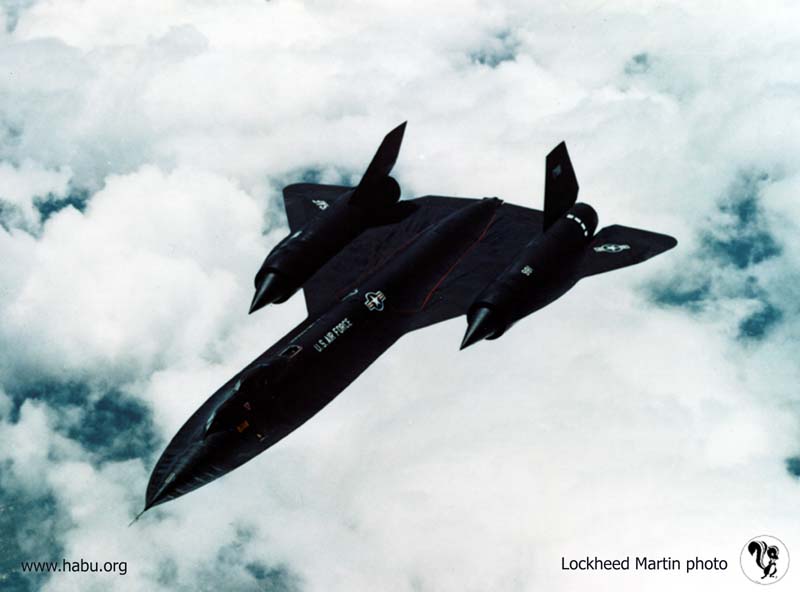The C-model Blackbird Was Actually Two Blackbirds Flying in Very Close Formation.
The Lockheed SR-71 is as iconic an aircraft as any that has ever flown. There have been numerous stories, legends, and myths about the Blackbird. This is the story of what may be the most unique SR-71 of them all. The two-seated SR-71C, SN 61-7981- the only SR-71C ever built. Few individual Blackbirds received nicknames of their very own. Collectively they were referred to as “Habu”, after a venomous snake indigenous to Okinawa in Japan where many of them were based during the Vietnam War and for a while thereafter. But 981 was dubbed “The Bastard.” Not because she was a particularly cantankerous bird. It was because 981 was actually two aircraft flying in very close formation.
Building the Bastard
She was actually two airframes pieced together. The forward half of 981 was actually never meant to fly at all. The structure was intended for use as an engineering mockup built for static (ground) testing only. But when one of the only two SR-71B two-seated trainers crashed on 11 January 1968, the decision was made to piece together a replacement trainer from available parts. The first YF-12A prototype, SN 60-6934, was mated to the mockup by Lockheed engineers at their Palmdale facility in California. This is where things got “interesting.”
Not on the Straight and Level
When 981 began flying on 14 March 1969, it became obvious that the geometry of the airframe was not entirely sorted out. Lockheed test pilots Robert J. Gilliland (pilot) and Steve Belgeau (RSO) reported some trim and control issues. When the jet was delivered to Edwards Air Force Base (AFB) for Air Force acceptance testing, the issues came into clearer focus. A team of Air Force test pilots took 16 flights over several weeks to determine the issues.
When Yaw Isn’t Really Yaw at All
The Air Force had Lockheed install a beta (yaw) indicator because the dynamically variable inlets and the associated bypass doors were not staying in sync with each other. The rudders also needed to be trimmed, which meant that they were out of their normal streamlined positions which increased drag on the airplane. The inlets remained a problem as well. After installing a Nomex yaw string, it was observed that 981 was indicating four degrees of yaw on the beta indicator but the high-tech yaw string was centered- indicating no yaw at all.

Hit it With a Hammer and Presto!
Some head-scratching and brainstorming ensued, and when it was finally determined that the pitot boom was out of alignment, by the same four degrees as indicated on the beta, things got finally got sorted out. With the flight computers receiving valid inputs from the pitot system, 981 flew just like the B model and as normally as any SR-71 Blackbird could be said to fly “normally.” She was delivered to the 9th Strategic Reconnaissance Wing at Beale AFB in California for operational use on 3 September 1970.

A Low-Time Airframe
981 helped train many of the pilots who flew SR-71s on their famous missions. The only operational difference between the B model and the C was that the C model had one fewer internal fuel tank, so refueling procedures were slightly different. 981 was a natural for taking VIPs on familiarization flights. But an SR-71 can’t pay the bills doing FAM flights. She flew operationally for the last time on 11 April 1976. “The Bastard” had only 737.3 hours on the clock when removed from flying status on 24 June 1976. 180.9 of those hours were actually only on the YF-12A portion of the airframe- flown before the creation of the jet. But because she was one of only two of her kind she was kept at Beale as a standby for the B.
A Fitting Resting Place for a Famous Jet
After the decision was made to enshrine 981 at the Hill AFB Aerospace Museum in April of 1990, all that was left to do was get her there. That proved to be a bit of an undertaking, but nothing the 67th Aerial Port Squadron (APS) and the 405th Combat Logistics Support Squadron (CLSS) couldn’t handle. The Blackbird was disassembled and carried to Hill in a C-5A Galaxy airlifter for reassembly and display. Air Force Reservists, active-duty USAF personnel, and volunteers got the job done in about two months. The only SR-71C ever built was towed to the museum and placed on display on 16 October 1991.
[youtube id=”xjDBzHMpCTw” width=”800″ height=”454″ position=”left”]




